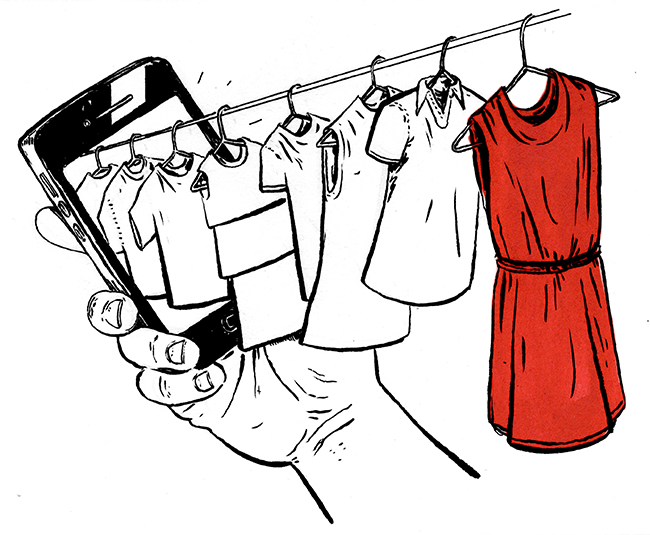ZEITGUIDE TO GOOD FASHION

ZEITGUIDE ‘FASHION’ IMAGE BY KRISTOFER PORTER
Used to be that the most fashion conscious people wouldn’t wear the same outfit twice. But the next frontier of fashion consciousness is a more responsible, sustainable approach.
“Fashion is the second most polluting industry in the world, behind petroleum,” says Zeitguide friend Greta Eagan, author of the book Wear No Evil. Its huge carbon footprint is a result of fiber being grown in one country, milled and dyed in another, cut and sewn in perhaps another. And an article of clothing might be sent back to countries like Italy for the label—“just so it says that it was made in Italy and not China.”
Fashion is also one of the most water intensive industries. It takes, on average, 1,800 gallons of water to make one pair of jeans.
So what should we do?
Wash less: When your clothes do need cleaning, Eagan suggests washing in cold water and then line-drying. It uses less energy, and line-drying keeps the integrity of the color and shape so your clothes last longer.
Recycle: Each year, 22.3 billion pounds of cast-off clothing and footwear go to landfills, even though 95% of it could be recycled. Organizations like Wearable Collections and I:Collect are placing collection boxes in stores, at farmers markets, and in building lobbies to gather clothing and shoes for recycling. Perhaps the most innovative idea: lease from Mud Jeans for up to a year, then turn them in for recycling.
Upcycle: This refers to turning one item into another, but without processing the material itself. For instance, The Sway makes jackets and handbags from leather scraps; Mariclaro upcycles totes out of old seat belts, furniture upholstery, and construction tarps.
Wear Used: Retailers like Forever21 and H&M are big pushers of “fast fashion,” clothing meant to be bought cheap, barely worn, then tossed. But fighting back are retailers like Patagonia, where customers get store credit for trading in used items, which are them resold in the “Worn Wear” section of the shop.
Shop organic fabrics: Eagan also informed us that a third of the world’s fertilizers, which contribute to soil and water contamination, are used for growing conventional cotton. H&M is now the #1 user of organic cotton. Nearly 11% of their cotton used in 2013 was certified organic, up from 7.8% in 2012.
Shop local: Eagan names Steven Alan, Theory, Nenette Lepore,The Row, and Rag and Bone as examples of brands that source locally in New York. At Amour Vert in San Francisco, everything from design to production is completed within a 20 mile radius.
And for those who still can’t stand to be seen the same outfit twice? There’s Rent-the-Runway. Sites like The RealReal, Poshmark, and Twice have also sprung up to make secondhand selling and shopping simple and mobile-enabled.
All of this will contribute to the Circular Economy, one that replaces our linear “take, make and waste” mentality with take, make andreuse. As Ellen MacArthur, founder of the EMFoundation, says, “With the circular economy, from the beginning you design for disassembly, you design for re-manufacture, you design so that product can fit within a flow.”
Keep Learning,
Brad Grossman
Creator, ZEITGUIDE
Founder, Grossman & Partners
____________________________
Because so many of you will be on vacation—and our Zeitguide “wellness” fellows all recommend unplugging—this will be the last weekly Zeitguide of the summer. See you after Labor Day.
For Zeitguide reruns, go here.
Zeitguide 2014 also makes for a great beach read…Get it here.
